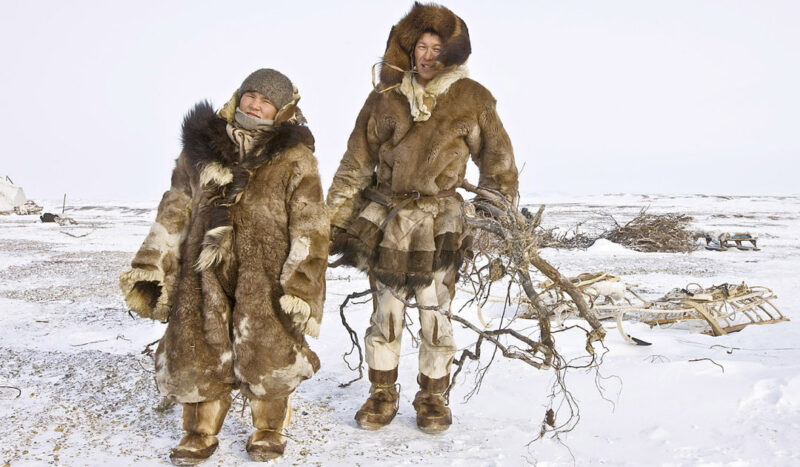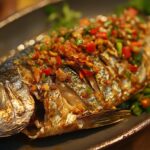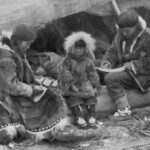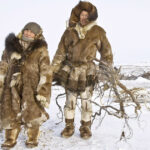Living in the Arctic requires clothing that can withstand extreme cold, wind, and moisture. For Inuit hunters and fishers, who often spend hours or even days outdoors, traditional skin clothing is not just a matter of comfort but of survival.
The Arctic environment is harsh, with temperatures often plunging well below freezing, accompanied by relentless winds that can strip away body heat in minutes. Whether hunting seals, walrus, whales, or caribou, maintaining body heat is crucial. Traditional Inuit clothing provides excellent insulation, crucial for these prolonged outdoor activities.
This clothing is specifically designed to keep the body warm and dry, which is vital to prevent frostbite and hypothermia.
A dual-layer system
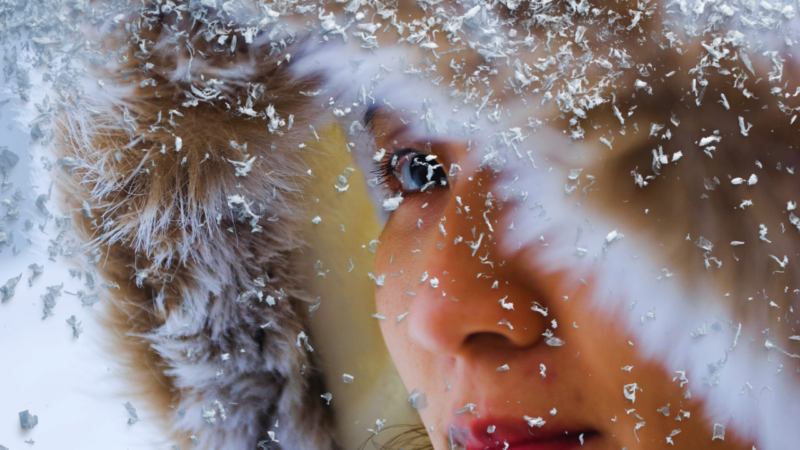
In winter, Inuit people traditionally wore two layers of clothing. The inner layer had fur turned inward, while the outer layer had fur turned outward. This ingenious design traps warm air between the layers, creating an insulating barrier that keeps the wearer warm even in the most frigid temperatures.
The dual-layer system also provides flexibility, allowing the wearer to adjust their clothing based on the activity level and weather conditions. This system’s effectiveness is such that it remains relevant today, not only for its practicality but also for its cultural importance.
Modern adaptations of this clothing still use the same principles, demonstrating the enduring wisdom of traditional Inuit knowledge.
Women’s smauti of sealskin
The amauti, a traditional parka worn by Inuit women, is particularly noteworthy. Originating from the Inuit of Labrador or Nunavik in the eastern Canadian Arctic, the amauti is characterized by a narrow back flap with a rounded tip and contrasting white and dark sealskin bands.
This design possibly dates back to early contact with missionaries in the 18th century. The amauti serves a dual purpose, offering warmth and a built-in baby-carrying pouch, which allows mothers to keep their infants close and safe.
Details of the amauti
- Material: Sealskin, known for its durability and insulating properties, makes the amauti an effective garment for harsh Arctic conditions. Sealskin is also waterproof, which helps keep the wearer dry during snow or rain.
- Design: Back flap, decoration with contrasting bands that add both aesthetic value and functionality, such as improved visibility in snowy landscapes. The design elements often have cultural significance, representing family or community identities.
The amauti not only provides warmth but also allows mothers to carry their babies in a built-in pouch, ensuring that both mother and child stay warm and close. This highlights the ingenuity of Inuit clothing, tailored to meet the demands of their environment.
Kamleika
The Aleut people, related to the Inuit, crafted the kamleika from sea mammal gut. This material is waterproof, making it ideal for the wet and windy conditions of the Arctic. The gutskin’s properties ensure that the wearer stays dry, which is crucial in preventing hypothermia. Kamleikas were sewn with grass or sinew threads, showcasing remarkable craftsmanship.
Types of Kamleika

Everyday use
Hooded with drawstrings at the hood and cuffs. About three new garments were needed annually due to wear and tear. These kamleikas were practical and designed for daily tasks, offering both protection and flexibility.
Festive or ceremonial use
Hoodless with a high collar and decorative bands, serving as status symbols and articles for trading. These garments often featured intricate designs and were worn during important community events, reflecting social status and cultural values.
Conservation of gut skin parkas
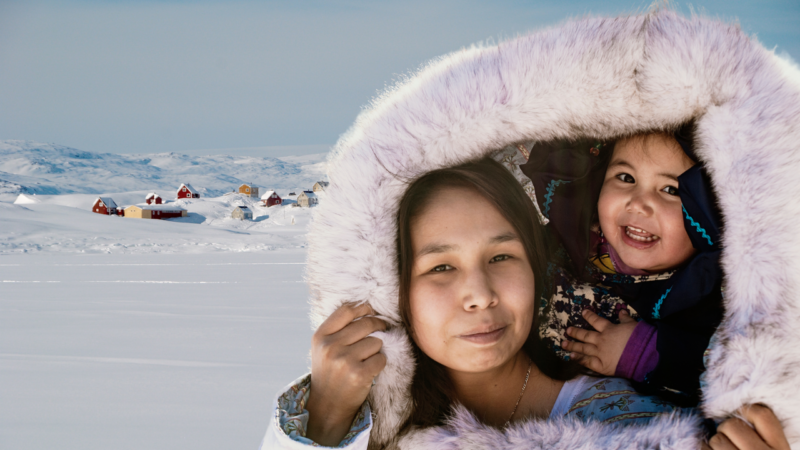
Gutskin parkas, due to their unique material, require special care. The gut remains flexible when saturated with water, so parkas are stored damp and softened with water vapor before display. This method ensures that the parkas retain their shape and durability over time.
Cleaning and reshaping involve securing holes and tears with adhesive and tinted tissue paper, ensuring these garments can be preserved for future generations.
Material and design details
- Material: Caribou skin, selected for its superior insulating properties and availability. Caribou skin is lightweight yet incredibly warm, making it ideal for Arctic conditions.
- Layers: Inner layer (fur inward), outer layer (fur outward), maximizing heat retention and wind protection. This design provides a microclimate around the body, crucial for maintaining warmth.
- Insulation: Air trapped between body and clothing layers, enhancing thermal efficiency. This natural insulation method is both effective and sustainable, utilizing renewable resources.
In summary
Traditional Inuit clothing is designed to handle the brutal Arctic conditions, offering incredible warmth and protection. But it’s not just about staying warm—this clothing carries deep cultural meaning, showcasing the Inuit people’s identity, history, and values.
Hello, I’m Philip Cooper. As an enthusiastic writer and explorer, I dedicate myself to uncovering the unique cultures and traditions of the Arctic regions. My journey began with a fascination for the resilient communities and their way of life in one of the world’s most challenging environments.
At The Fourth Continent, I share stories about the rich heritage, traditional practices, and the breathtaking landscapes of Greenland and its neighboring areas. Join me as we explore the wonders of the Arctic, bringing you closer to the heart of this magnificent land.

